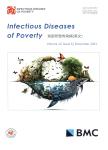Challenges and needs for China to eliminate rabies
作者机构:Division of Infectious DiseasesChinese Center for Disease Control and PreventionBeijingChina Key Laboratory of Surveillance and Early-warning on Infectious DiseaseChinese Center for Disease Control and PreventionBeijingChina World Health OrganizationCountry OfficeBeijingChina OIE Reference Laboratory for RabiesInstitute of Military VeterinaryAcademy of Military Medical SciencesChangchunChina Food and Agriculture OrganizationBeijingChina National Institute for viral disease control and preventionChinese Center for Disease Control and PreventionBeijingChina
出 版 物:《Infectious Diseases of Poverty》 (贫困所致传染病(英文))
年 卷 期:2013年第2卷第1期
页 面:178-187页
核心收录:
学科分类:1004[医学-公共卫生与预防医学(可授医学、理学学位)] 100401[医学-流行病与卫生统计学] 10[医学]
主 题:Rabies Elimination China Needs Challenges Review
摘 要:In China,rabies is a significant public health concern where dogs remain the main reservoir of disease transmission to humans;rabies-related mortality ranks second in the *** compiled all published articles and official documents on rabies in China s Mainland to examine challenges and needs to eliminate rabies in the *** Chinese authorities have identified rabies as a priority,recognized rabies control in dogs as key to control rabies in humans and required intersectoral *** have been made to respond effectively to the latest re-emergence of rabies,which peaked in 2007 with3,300 *** these outcomes and the increasing volume of publications and regulations in the recent years,our review points to some major information gaps to improve rabies control activities and envisage elimination *** emphasis on laboratory or pathogen-associated and basic epidemiology research in the literature has contrasted with the absence of information to monitor various systems in humans and animals(*** of surveillance,response and post-exposure prophylaxis).Information is also lacking to appropriately inform policymakers(*** disease burden,impact of policies)and assist program managers(*** and strategic guidance for cost-effective prevention and control activities,public education and dog population management).In conclusion,strategic planning is needed to provide a sense of direction,demonstrate feasibility of elimination in China,and develop a research agenda,addressing country’s operational needs and *** planning should be a multisectoral effort.



